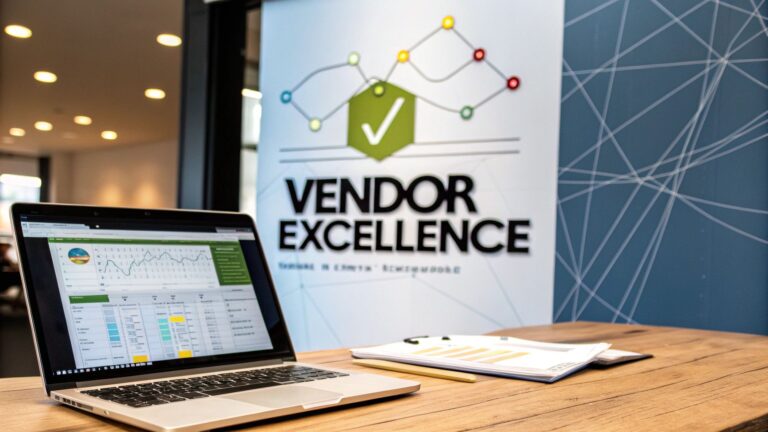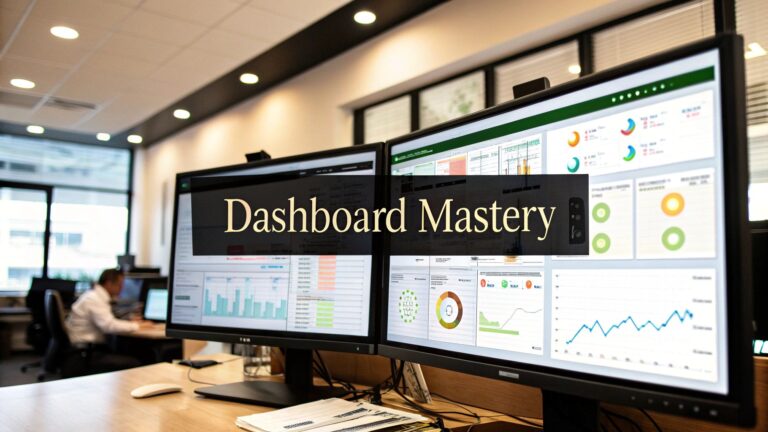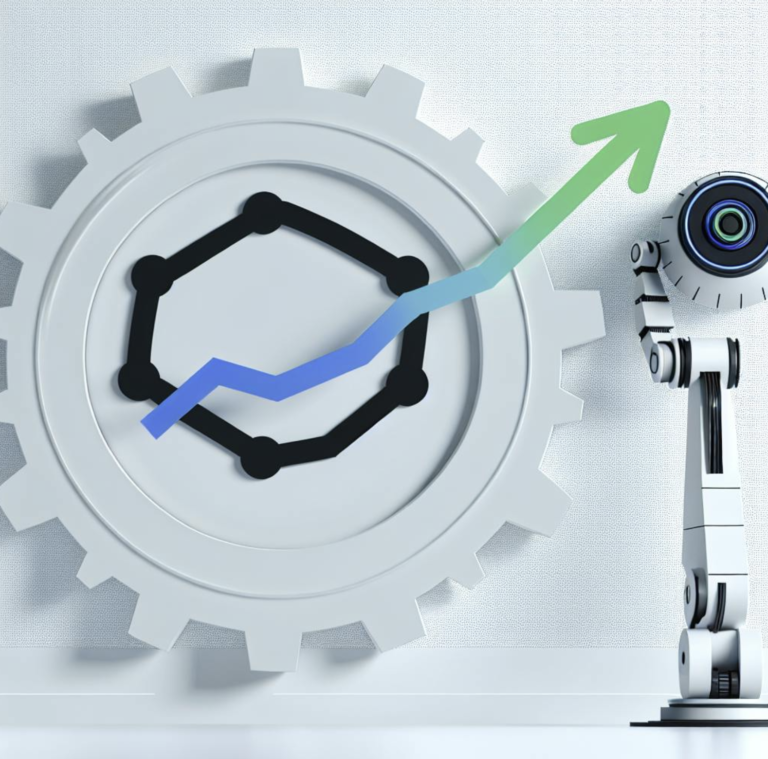8 Marketing Automation Best Practices for 2025
Marketing automation is no longer a futuristic concept; it's the engine powering today's most successful B2B and SaaS businesses. However, simply owning the software isn't enough. The difference between stagnant campaigns and exponential growth lies in mastering the strategic frameworks that turn automation into a revenue-generating machine. Many businesses get stuck in a 'set and forget' mentality, missing out on the immense potential of their tools. True success requires a commitment to continuous optimization, deep customer understanding, and seamless integration with sales processes. This approach transforms your platform from a simple email scheduler into a dynamic system that nurtures leads, personalizes experiences, and drives measurable revenue.
In this comprehensive guide, we move beyond the basics to explore the core marketing automation best practices that deliver tangible results. We will provide actionable strategies to help you refine your operations and maximize your investment. Forget generic advice; this listicle is designed for founders, marketing leaders, and operations directors who need to implement scalable growth systems.
You will learn how to:
- Map customer journeys to create highly relevant communication workflows.
- Implement sophisticated lead scoring and progressive profiling to identify sales-ready prospects.
- Optimize campaigns with rigorous A/B testing and data-driven insights.
- Integrate multi-channel analytics for a complete view of your ROI.
- Align sales and marketing teams for cohesive, efficient lead management.
From sophisticated audience segmentation to dynamic content personalization, these strategies are designed to help you streamline workflows, boost ROI, and scale your operations effectively. Let's dive into the practices that will define your success.
1. Customer Journey Mapping and Segmentation
Effective marketing automation isn't about sending mass emails; it's about delivering the right message to the right person at the right time. This is where customer journey mapping and segmentation become foundational marketing automation best practices. This approach involves creating a detailed, visual representation of every interaction a potential customer has with your brand, from initial awareness to post-purchase loyalty. By understanding this path, you can segment your audience into distinct groups based on their behaviors, demographics, and engagement levels.
The core benefit is moving away from a one-size-fits-all strategy. Instead of guessing what users need, you use data to inform your automated communications. A new visitor who downloaded an introductory ebook receives a different workflow than a loyal customer who has made multiple purchases. This precision ensures your messaging is always relevant, helpful, and contextually aware, significantly boosting engagement and conversions.
How to Implement Journey-Based Segmentation
Start by identifying the key stages in your customer lifecycle, such as Awareness, Consideration, Decision, and Retention. For each stage, map out the common touchpoints (e.g., visiting a pricing page, watching a demo, reading a case study) and the questions or goals a user has at that point.
Once your map is outlined, you can build segments using data from your marketing automation platform. For instance:
- Behavioral Segments: Group users who have visited specific product pages, abandoned a cart, or repeatedly engaged with content on a particular topic. Amazon excels at this, using browsing and purchase history to automate highly personalized product recommendations.
- Demographic Segments: Use data like job title, company size, or geographic location to tailor offers. This is particularly powerful in B2B marketing.
- Engagement Segments: Create lists based on email open rates, click-through rates, or login frequency. This allows you to re-engage inactive users or reward your most active brand advocates. Spotify leverages this by creating automated "Wrapped" campaigns and personalized playlists based on listening patterns.
The following infographic highlights the tangible business impact of implementing strategic journey mapping and segmentation.
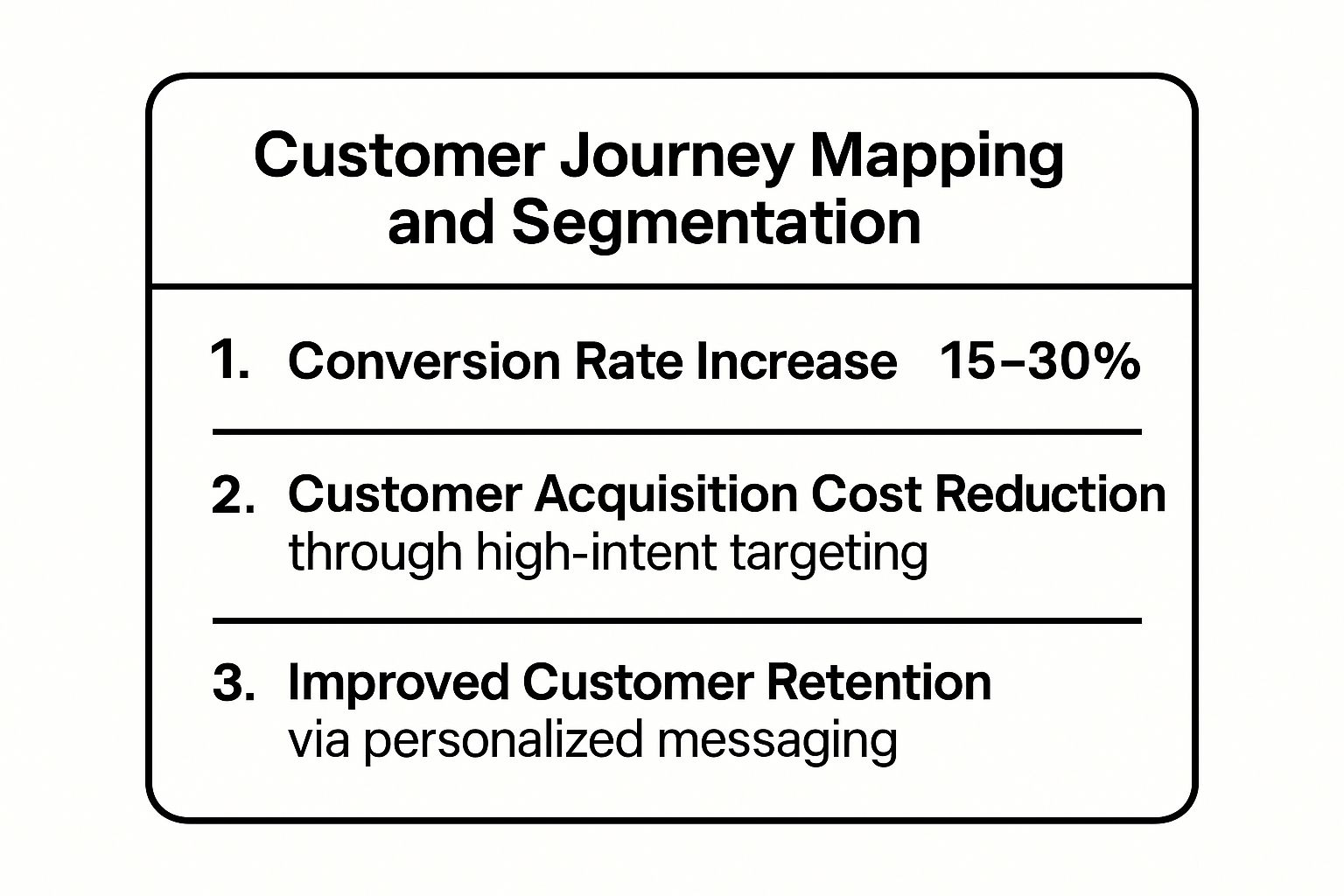
As the data shows, the results of this practice are not just theoretical; they directly improve conversion rates while optimizing marketing spend.
2. Lead Scoring and Progressive Profiling
Not all leads are created equal. A core marketing automation best practice is to systematically identify and prioritize those most likely to convert, which is achieved through lead scoring and progressive profiling. This method involves assigning numerical values to leads based on their demographic data, engagement level, and specific actions. At the same time, progressive profiling gradually builds a richer customer profile by collecting information over time through smart forms, avoiding the friction of a long initial sign-up process.
The primary benefit is creating a highly efficient sales funnel where your sales team can focus their energy exclusively on sales-ready leads. This data-driven approach bridges the gap between marketing and sales, ensuring that marketing-qualified leads (MQLs) are genuinely prepared for a sales conversation. Instead of passing every new contact to sales, automation nurtures and qualifies them, leading to higher conversion rates and a more productive sales cycle.
How to Implement Lead Scoring and Progressive Profiling
Begin by collaborating with your sales team to create a shared definition of a "qualified lead." This alignment is crucial for building a scoring model that accurately reflects lead quality. Once you have your criteria, you can assign points based on various attributes and actions.
- Behavioral Scoring: Award points for high-intent actions like requesting a demo, visiting the pricing page, or viewing case studies. For instance, Marketo’s sophisticated lead scoring helped Lenovo increase its volume of sales-ready leads by a remarkable 650% by precisely identifying these behaviors.
- Demographic Scoring: Assign values based on ideal customer profile (ICP) data, such as job title, industry, or company size. A "Director of Marketing" at a 500-person tech company might receive a higher score than an "Intern" from a non-target industry.
- Negative Scoring: Subtract points for disqualifying actions. This could include unsubscribing from emails, visiting a "Careers" page, or using an email address from a known competitor. This keeps your pipeline clean and focused.
- Progressive Profiling Implementation: Use smart forms that recognize returning visitors and present new questions to gather more data. For example, a first-time visitor might only be asked for their email. On their second visit, the form could ask for their company name, and on a third, their job title. Pardot's use of this tactic enabled Honeywell to increase its form conversion rates by 25%.
By combining these tactics, you can automate the handoff of qualified leads to your sales team, improving alignment and efficiency. Integrating these scores directly into your sales pipeline management software ensures a seamless flow of information.
3. Drip Campaign Optimization and A/B Testing
Setting up an automated drip campaign is only half the battle; ensuring it performs optimally is what separates good marketing from great marketing. Drip campaign optimization and A/B testing are essential marketing automation best practices focused on continuous improvement. This approach involves creating automated email sequences to nurture leads over time while systematically experimenting with every element, from subject lines and content to send times and calls-to-action (CTAs), to maximize performance.

The primary goal is to replace assumptions with data-driven decisions. Instead of hoping a certain subject line works, you test it against a variation to see which one genuinely drives higher open rates. This iterative process allows you to refine your automated workflows, ensuring they evolve with your audience's preferences and deliver progressively better engagement rates and conversion outcomes. The results are tangible, as companies like Roxy increased revenue by 75% through targeted drip campaign optimization facilitated by platforms like Mailchimp.
How to Implement A/B Testing in Drip Campaigns
Begin by identifying the key performance indicators (KPIs) you want to improve, such as open rate, click-through rate (CTR), or conversion rate. Choose a single variable to test in a specific email within your sequence to ensure you can attribute any performance change directly to that element.
Once you have a hypothesis (e.g., "A subject line with an emoji will get a higher open rate"), you can set up the test in your marketing automation tool. For example:
- Subject Line Testing: Test a direct, benefit-driven subject line against a more curious or question-based one. Unbounce famously increased its email CTR by 40% through rigorous subject line testing.
- CTA Optimization: Experiment with the wording, color, or placement of your call-to-action button. Test "Get Your Free Trial" against "Start Exploring Now" to see which drives more clicks.
- Send Time and Frequency: Analyze when your audience is most active. Campaign Monitor's client BuzzSumo improved open rates by 27% simply by optimizing send times to match peak user engagement periods.
- Content and Tone: Test a long-form, educational email against a concise, visually driven one. Or, experiment with different tones to see what resonates best with your specific audience segment.
Remember to run your test with a statistically significant sample size before declaring a winner. Once you have a clear result, implement the winning variation as the new control and begin testing another element. This constant cycle of testing and refinement is a cornerstone of effective marketing automation.
4. Multi-Channel Attribution and Analytics Integration
Effective marketing automation best practices extend far beyond sending messages; they involve understanding which activities truly drive results. This is where multi-channel attribution and analytics integration become critical. This practice involves tracking and measuring customer interactions across all marketing channels, from email and social media to paid ads and website visits, to create a unified view of the customer journey. By connecting your marketing automation platform with powerful analytics tools, you can accurately attribute conversions to the right touchpoints.
The core benefit is moving from guesswork to data-driven decision-making. Instead of wondering if your blog content or your social media campaigns are more effective, you gain clear visibility into how each channel contributes to your goals. This allows you to optimize your budget, double down on high-performing channels, and refine underperforming ones. For comprehensive insights and streamlined workflows, consider the importance of mastering marketing automation integration across your tech stack.
How to Implement Attribution and Analytics Integration
Begin by defining your key conversion events, both macro (e.g., a purchase, a demo request) and micro (e.g., a newsletter signup, a whitepaper download). Then, ensure your marketing automation and analytics platforms are connected to share data seamlessly. This creates a single source of truth for campaign performance.
Once connected, you can build a robust tracking framework:
- Consistent UTM Tagging: Implement a standardized UTM parameter strategy for all campaigns across email, social media, and paid ads. This ensures every link is tracked, allowing your analytics tools to identify the exact source, medium, and campaign that drove a visitor to your site.
- Goal and Event Tracking: Set up goals in your analytics platform (like Google Analytics 4) that mirror the conversion events defined in your marketing automation system. This enables you to see not just which channels bring traffic, but which ones bring converting traffic. For example, HubSpot’s attribution reporting excels at showing how specific blog posts or social media campaigns directly influence the sales pipeline.
- Leverage Multiple Attribution Models: Don't rely solely on a "last-click" model. Analyze your data through various models like first-click, linear, or time-decay. This provides a more holistic understanding of how different channels, including those from the best social media automation tools, contribute at different stages of the customer journey, from initial awareness to final conversion.
5. Behavioral Trigger Automation
While scheduled campaigns have their place, the most sophisticated marketing automation best practices hinge on real-time responsiveness. Behavioral trigger automation is an advanced strategy that initiates marketing messages or workflows based on specific customer actions or inactions. Instead of broadcasting messages on a predetermined schedule, this approach creates a dynamic, one-to-one conversation that adapts instantly to individual user behavior, engagement levels, and demonstrated interests.
This practice moves marketing from a monologue to a dialogue. When a user takes a high-intent action, like visiting a pricing page three times in one week or abandoning a shopping cart, the system automatically triggers a relevant, context-aware communication. This timeliness and relevance are what make behavioral triggers so powerful, allowing you to engage customers at the precise moment they are most receptive to your message.
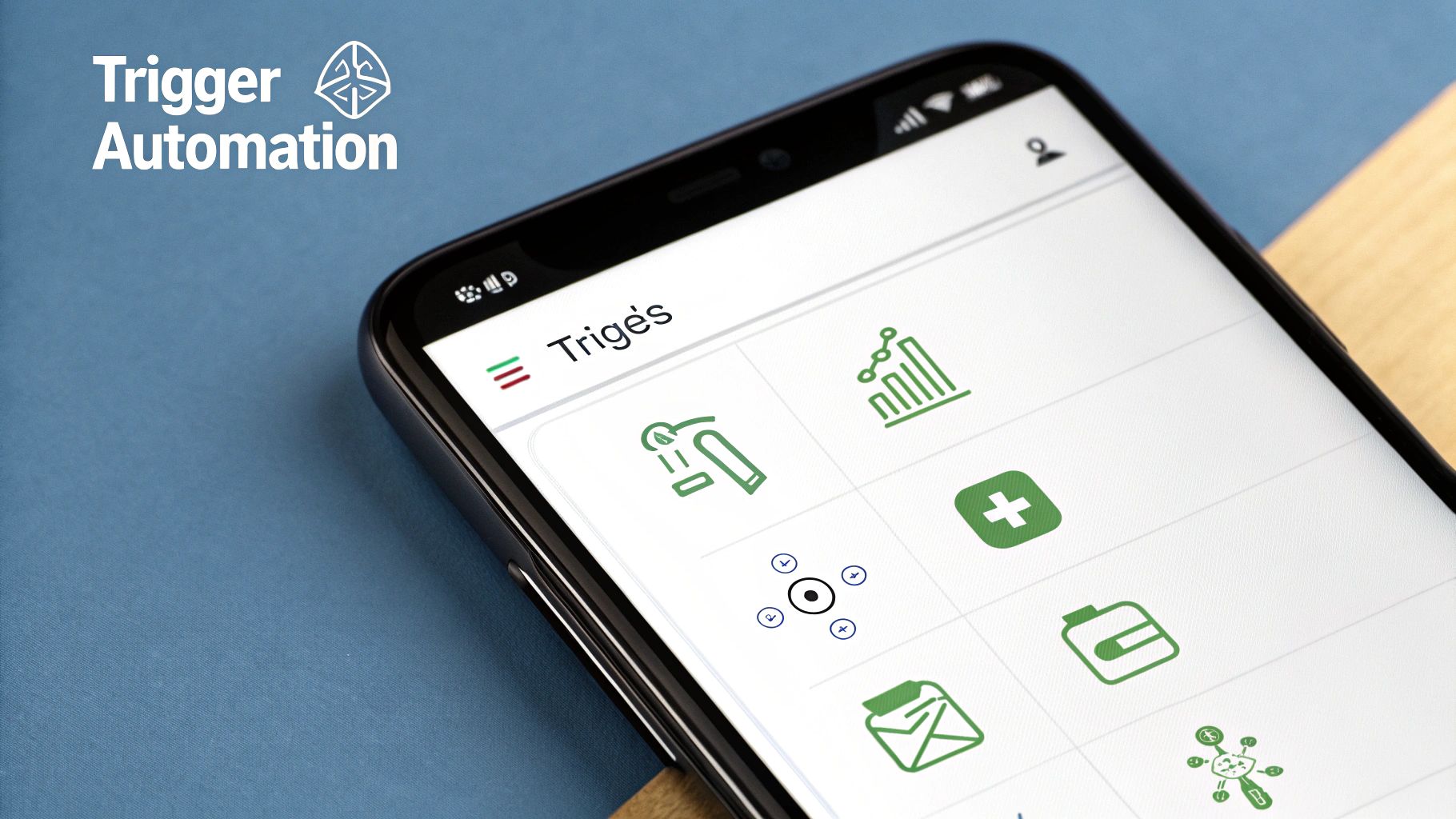
How to Implement Behavioral Trigger Automation
Begin by identifying high-value customer actions that signal specific intents. These triggers are the "if" in your "if-then" automation logic. Connect these actions to specific, helpful, and timely responses that guide the user to the next logical step in their journey.
Look for opportunities to implement triggers such as:
- High-Intent Actions: Trigger a personalized outreach from a sales rep or an invitation to a live demo when a user watches a key product video or visits the pricing page multiple times. SaaS companies like Intercom use in-app behavioral messaging to prompt users to explore new features right after they’ve completed a related task.
- Abandonment Recovery: Send an automated email or SMS reminder when a user adds items to their cart but doesn't complete the purchase. E-commerce platforms like Klaviyo and Amazon have perfected this, often including the abandoned items and related product recommendations in the reminder email.
- Engagement-Based Content: Trigger a follow-up sequence with more advanced content when a user downloads a beginner's guide or signs up for a webinar. For instance, Airbnb sends location-based travel content and inspiration after a user searches for a specific destination.
To ensure your automations are helpful, not intrusive, always provide clear opt-out options and set frequency caps to avoid overwhelming users with too many messages in a short period. By focusing on timely and contextually relevant interactions, you make your marketing feel less like automation and more like a personalized service.
6. Data Hygiene and GDPR Compliance Management
Powerful marketing automation is built on a foundation of high-quality, legally compliant data. Without it, even the most sophisticated workflows will fail. Data hygiene and GDPR compliance management is the systematic practice of ensuring your customer data is clean, accurate, and handled in accordance with privacy regulations. This involves regular data cleansing, managing user consent, and establishing processes that respect customer privacy rights while fueling effective automation.
The core benefit of this practice is two-fold: it protects your brand from significant legal and financial penalties while simultaneously improving marketing performance. Clean data leads to better deliverability, higher engagement rates, and more accurate segmentation. A robust compliance framework builds trust with your audience, which is a critical asset in today's privacy-conscious world. This is a non-negotiable component of modern marketing automation best practices.
How to Implement Data Hygiene and Compliance
Start by creating a clear data governance policy that outlines how data is collected, stored, used, and retired. This policy should be the single source of truth for your entire team. From there, integrate compliance and hygiene directly into your automation platform's daily operations.
Use your platform's features to automate these essential tasks:
- Implement a Double Opt-In: Require new subscribers to confirm their email address after signing up. This verifies interest, reduces bounced emails, and creates a clear record of consent, a cornerstone of regulations like GDPR.
- Automate Data Cleansing: Use built-in tools to regularly identify and suppress invalid or inactive email addresses. Mailchimp excels at this by automatically cleaning lists to protect sender reputation. Similarly, platforms like HubSpot offer features to manage GDPR consent, tracking permissions for different types of communication.
- Conduct Regular Audits: Schedule periodic reviews of your data and compliance processes. Check that your privacy policy is up-to-date, consent records are accurate, and that you have a clear process for handling data subject requests, such as the right to be forgotten.
- Use Progressive Profiling: Instead of asking for all information upfront, use forms that incrementally gather data over time. This keeps contact records current and accurate without overwhelming new leads, ensuring the data you collect remains relevant.
7. Sales and Marketing Alignment (SMarketing)
Marketing automation loses its power if it operates in a silo, disconnected from the sales team that ultimately closes deals. This is why Sales and Marketing Alignment, or "SMarketing," is one of the most critical marketing automation best practices. This strategic approach involves tightly integrating marketing automation efforts with sales processes to ensure seamless lead handoffs, shared goals, and a unified customer experience. It breaks down the traditional barriers between the two departments, transforming them into a single, cohesive revenue engine.
The core benefit is creating a frictionless journey for the customer. When marketing nurtures a lead with targeted content and sales receives that lead with full context and a clear history of engagement, the conversation is warmer, more relevant, and far more effective. This alignment prevents qualified leads from falling through the cracks and ensures that sales reps spend their time on prospects who are genuinely ready for a conversation, dramatically improving efficiency and conversion rates.
How to Implement SMarketing
True alignment begins with shared definitions and goals. Both teams must agree on what constitutes a "Marketing Qualified Lead" (MQL) and a "Sales Qualified Lead" (SQL). This is often codified in a Service Level Agreement (SLA) that outlines each team's responsibilities and handoff protocols.
Once definitions are set, you can leverage your marketing automation platform to facilitate the process:
- Unified Lead Scoring: Develop a lead scoring model that incorporates input from both sales and marketing. This score should reflect genuine sales readiness based on a combination of demographic data (e.g., job title, company size) and behavioral signals (e.g., pricing page visits, demo requests). This ensures marketing prioritizes the leads sales wants.
- Seamless Information Handoff: Configure your automation to provide sales reps with a complete history of a lead's interactions. Platforms like HubSpot and Salesforce excel at this, giving sales teams instant visibility into which emails a lead opened, which content they downloaded, and how they engaged with the website.
- Shared Dashboards and Reporting: Create a central dashboard that tracks key metrics important to both teams, such as MQL-to-SQL conversion rates, lead velocity, and pipeline contribution. Regular joint meetings to review these metrics foster accountability and continuous improvement. Effective sales and marketing alignment often begins with streamlining the top of the funnel. You can learn more about how to automate lead generation to effortlessly boost your sales efforts.
This integrated strategy ultimately boosts morale and overall business performance. Learn more about how to increase team productivity through better alignment.
8. Personalization at Scale Through Dynamic Content
True marketing automation moves beyond inserting a first name into an email. The next frontier is achieving personalization at scale through dynamic content. This practice involves creating flexible content templates where specific elements automatically change based on individual user data, behavior, preferences, or real-time context. It allows you to deliver a unique experience to thousands or millions of customers simultaneously without manual effort.
The core benefit is making every interaction feel personal and hyper-relevant. Instead of sending one generic newsletter, you can show different products, blog posts, or calls-to-action within the same email campaign, tailored to each recipient. This level of customization, a key marketing automation best practice, dramatically increases engagement, builds stronger customer relationships, and drives higher conversion rates by showing users exactly what they are most interested in.
How to Implement Dynamic Content
Begin by identifying opportunities for personalization within your communications. What data points do you have that could inform a more relevant experience? Common starting points include location, past purchases, or browsing history. From there, you can build dynamic content blocks in your marketing automation platform.
Once you have a strategy, you can implement different types of dynamic content:
- Behavior-Based Content: Display content based on user actions. For example, if a user has repeatedly viewed your "Enterprise Plan" pricing page, you can dynamically insert a case study from an enterprise client into your next newsletter to them. E-commerce giant Amazon excels at this, using browsing and purchase history to populate emails with dynamic product recommendations that are unique to each shopper.
- Demographic-Based Content: Tailor visuals and offers based on known demographic data. A clothing retailer could show winter coats to users in colder climates and swimwear to those in warmer regions, all within a single automated campaign.
- Preference-Based Content: Use data explicitly provided by users through a preference center. If a user states they are interested in "jazz" and "rock," Spotify can use this to power its dynamically generated "Discover Weekly" playlists, ensuring the recommendations are highly accurate and valued.
Start small by personalizing a single element, like a hero banner or a featured blog post. As you gather more data and measure the results, you can implement more sophisticated dynamic rules to create a truly one-to-one experience at scale.
Marketing Automation Best Practices Comparison
| Item | Implementation Complexity | Resource Requirements | Expected Outcomes | Ideal Use Cases | Key Advantages |
|---|---|---|---|---|---|
| Customer Journey Mapping and Segmentation | High – requires advanced analytics and regular updates | Significant data collection and analysis; advanced tools | 15-30% conversion increase; improved retention; predictive insights | Multi-channel marketing; personalization at scale | Personalized messaging; reduces acquisition cost; predictive analytics |
| Lead Scoring and Progressive Profiling | Medium to High – setup multiple scoring criteria | Collaboration with sales; data calibration | 30-50% improved conversion; prioritizes high-quality leads | B2B lead qualification; sales efficiency | Improves lead quality; reduces form abandonment; real-time updates |
| Drip Campaign Optimization and A/B Testing | Medium – requires systematic testing and sufficient sample sizes | Access to testing tools and analytics; campaign management | 20-40% higher open and click rates; continuous optimization | Email nurture sequences; engagement improvement | Data-driven improvements; automated winner selection; multivariate testing |
| Multi-Channel Attribution and Analytics Integration | High – complex integrations and technical setup | Multiple tool integrations; technical expertise | Accurate ROI measurement; data-driven budget allocation | Cross-channel marketing performance evaluation | Unified reporting; identifies best channels; ROI focus |
| Behavioral Trigger Automation | High – requires sophisticated real-time tracking | Advanced data management; automation platform | Higher conversion via timely messaging; reduced manual tasks | Real-time responsive campaigns; e-commerce triggers | Increased relevance; cross-channel triggers; improves engagement |
| Data Hygiene and GDPR Compliance Management | Medium – ongoing process with technical and legal demands | Continuous data validation; compliance tools | Better deliverability; legal compliance; improved data quality | All data-driven marketing; regulated markets | Reduces risk; enhances trust; maintains data accuracy |
| Sales and Marketing Alignment (SMarketing) | Medium to High – requires organizational change | Technology for integration; cross-team collaboration | 67% conversion increase; shorter sales cycles | Teams seeking better lead handoff and collaboration | Improved lead quality; coordinated messaging; shared goals |
| Personalization at Scale Through Dynamic Content | High – needs AI/ML and content management systems | Extensive data management and content resources | 50-100% engagement boost; increased lifetime value | Large-scale personalized marketing campaigns | Scales personalization; mass customization; dynamic content delivery |
From Best Practices to Business Growth
Navigating the landscape of marketing automation can feel like assembling a complex machine without a blueprint. You have powerful components, but their true potential is only unlocked when they work in perfect harmony. Throughout this guide, we've deconstructed the core mechanisms of a high-performing automation engine, moving beyond generic advice to provide a strategic framework for sustainable growth. The journey from manual effort to automated excellence isn't just about adopting new software; it's about fundamentally rethinking how you connect with your audience at every stage.
The marketing automation best practices we've explored are not isolated tactics. They are interconnected pillars supporting a single, unified goal: to deliver the right message to the right person at the right time, at scale. From the foundational work of customer journey mapping and meticulous audience segmentation to the dynamic precision of behavioral triggers and personalization at scale, each practice builds upon the last. You cannot achieve meaningful personalization without clean data and robust segmentation. Similarly, effective lead scoring is impossible without a clear understanding of the customer journey.
Synthesizing Strategy into Action
The true takeaway is that successful automation is a blend of art and science. The "science" lies in the data-driven components: A/B testing your drip campaigns, integrating multi-channel analytics, and maintaining impeccable data hygiene to ensure GDPR compliance. The "art" is in the human-centric approach: fostering true sales and marketing alignment (Smarketing) to create a seamless handoff and using progressive profiling to build relationships based on trust, not just transactions.
To translate these concepts from theory into tangible results, your immediate focus should be on creating a prioritized action plan. Don't try to implement everything at once. Instead, identify the area of greatest friction in your current funnel and start there.
- Is your lead quality low? Begin by refining your lead scoring model and aligning the criteria directly with your sales team's definition of a "qualified" lead.
- Are your engagement rates dropping? Focus on behavioral triggers and dynamic content to make your communications more relevant and timely.
- Is your team flying blind? Prioritize analytics integration to connect your automation efforts to clear revenue outcomes.
The Ultimate Goal: A Scalable Growth Engine
Mastering these marketing automation best practices does more than just save time or streamline workflows. It transforms your marketing function from a cost center into a predictable, scalable revenue driver. It builds resilience into your business, allowing you to nurture leads, engage customers, and drive sales 24/7 without constant manual intervention. This strategic implementation is what separates businesses that merely use automation from those that thrive because of it.
Ultimately, the goal of adopting these best practices is to achieve measurable business growth. To fully grasp the financial impact and how to articulate it to stakeholders, it's crucial to connect your strategic efforts to the bottom line; delve deeper into understanding the marketing automation ROI secrets from industry veterans to build a powerful business case for your initiatives. This shift from activity-based metrics (like email opens) to business-level KPIs (like customer lifetime value and pipeline velocity) is the final, crucial step in achieving true automation maturity.
The path forward is one of continuous improvement. The digital landscape will evolve, customer expectations will shift, and your business goals will change. A commitment to these core principles ensures you have the agile, intelligent, and robust marketing framework needed to not only keep pace but to lead the way.
Ready to move from theory to action and build a powerful, efficient growth engine? At MakeAutomation, we specialize in implementing the very marketing automation best practices discussed here, providing the expert strategy and hands-on support to help you achieve scalable results. Schedule a free consultation today to discover how we can tailor a solution to your unique business needs.


